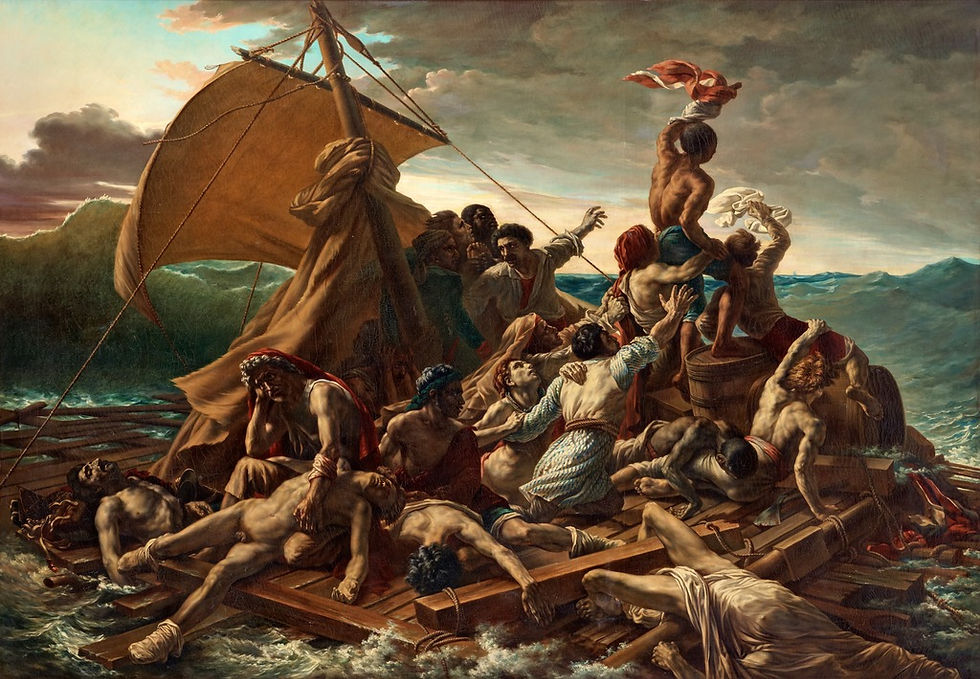Parabolic Overture and a New Way to Gaze at Advent/Christmas
- brookmcbride
- Nov 17, 2022
- 4 min read
Updated: Nov 18, 2022

As we move into the new year (the Christian Year starts this Sunday, the first Sunday of Advent), I’ve been thinking about how important our gaze, just how we look at things, matters. Our Advent theme at Bear Creek is called “Changing our Gaze”, and my hope is that we can learn to gaze at the Christmas stories in a new way…a way in which all of us can discover that this story isn’t just about what did or did not happen over 2000 years ago, but, instead, something that can and does happen in each of us now, in this time and season.
As part of our Advent/Christmas season, I’m going to offer a book study that focuses on a book written by Marcus Borg and John Dominic Crossan called “The First Christmas”.

In this book Borg and Crossan share that they think that ever since the Enlightenment, our “modern” gaze, has been focused on the wrong thing about these stories. Since the Enlightenment and the rise of an emphasis on the “scientific approach” to things, the major concern of the Christmas stories in Luke and Matthew has been on whether they are fact or fable. On whether these stories “really happened.”
Borg and Crossan believe that this question is not very helpful when looking at these two stories. Instead of looking at these stories as fact or fable, they propose a third alternative. They suggest that we focus our question on what these stories “mean”. It is the meaning of these stories that matter.
They suggest that these two wonderful stories, were not written with a “scientific approach” in mind (indeed, how could they? The “scientific approach” didn’t come into full embodiment until the Enlightenment, the 1700’s. The gospels were written 1600 years earlier, in 80-90 AD!) Borg and Crossan suggest that the best way to think of the stories of Jesus’ birth is to think of them as “parabolic overture”.
Just as Jesus told parables to “change our gaze”, to help us to see things more clearly and differently, so Matthew and Luke told these two birth parables to get us to change our gaze, to get us to think about our lives differently. The key to every parable was not whether they were fact or fable, but was to figure out what they meant. The same goes for the stories of Jesus birth.
I find this understanding of “parabolic overture” so helpful! From the time I was 12 I always thought the real meaning of Christmas was about me somehow wrapping my “scientific mind” around the idea that although a “virgin birth” was impossible, somehow, in order to be a believer, I must believe something I couldn’t. Christmas was about somehow putting away what I had learned in school and letting “faith” lead me through these incredulous hoops to “belief”. To be honest, it didn’t work very well. Most of the time it just taught me that I had a “weak” faith and should probably just give up on the whole “religion” scene. This kind of thinking always pitted two things I loved, science and religion, against each other. It was a total no-win for me!
But now, to be honest, Borg and Crossan give me a way to gaze at the Christmas story anew. Whether it’s fact or fable, doesn’t matter! What matters is what these wonderful stories meant and can now mean for me!
Take Luke’s Christmas story, for instance. Read Luke 1 and 2 and you will see a couple of themes that are just so refreshing. First, look at how many women are mentioned in the story. And look who the star of this Christmas Pageant is. Mary is the shining star! Elizabeth and even Anna, shine as well. Mary and Anna aren’t considered “hand maidens” either! They are actually declared prophets! In the male dominated world of the 1st century, this had to be so refreshing to those who heard it!
The other part of the story that stands out to me and many scholars, is Luke’s insistence that in Jesus, God is especially reaching out to the lowly and oppressed. This comes to forefront in the group of people the angels invite to the manger after Jesus’ birth: the shepherds! Shepherds, in first century Israel, were lower than even peasants, in terms of status. You just couldn’t get any lower! They are a group of people in the margins of the marginal! And yet, they are invited first! In Christ God is turning this world upside down…the last truly are first, and the first truly are last!
And so, I invite you this Advent/Christmas season to join me in this study! We will meet on Tuesdays @ 9:30 a.m. and on Sundays at 7 pm. Each will be at the church, in our church library, but if you can’t make it in person, please consider joining us on zoom. The links are below!
The First Christmas Study Tuesday (Starts Tuesday, November 29)
The First Christmas Study Sunday (Starts Sunday, December 4th)
Perhaps by coming together and gazing at these stories in new ways, we might learn to change our gaze in a way that can inspire us and give us hope.
Your friend and pastor, gazing on the Christ child in a new way, Brook



Comments